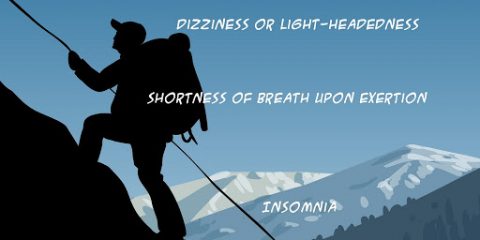If you’ve never walked in high altitudes (above 5,000 feet), you will soon be introduced to a part of the world like no other. A great challenge comes along with the dramatic scenery and culture that journeys to K2 Base Camp, Gondogoro La, and the Snow Lake Trail provide. Proper physical conditioning is absolutely essential to reaching your goals of the summit or highest pass – while enjoying every step.
Dedication is the key element in conditioning for your ascent. Though we all have busy lives, you must find time to be committed to a daily personal training regimen. The goal is to create a workout program that gets you in top shape at the date of your respective climb. Your personal program will depend on many factors including your schedule, location, climate, and access to training equipment.
**The following is just a sample program. You should definitely consult your physician before beginning this or any fitness training. You should also consult with a certified, professional trainer.
Table of Contents [hide]
1. Boosting Your Aerobic Fitness
No surprise here, but the best way to prepare for trekking at altitude is to trek at altitude. If you have access to areas above 5,000 (and the higher the better) take advantage of this opportunity as much as possible. Those who don’t have this access will need to work even harder to prepare for trekking at high altitudes. As any physical activity at high altitude is more challenging, you want to account for this by making your workouts more challenging in several possible ways:
- Hike steep hills. Going uphill should account for the bulk of your training! Besides outdoor trails, try a Stairmaster on a fast setting or long flights of stairs in a stadium.
- Hike with a loaded pack. Though you will not be carrying more than a daypack on your expedition, train with a loaded pack (20—50 lbs.). Try filling your pack with one-gallon water jugs, and emptying them out when you reach the top – this way you save your knees the stress of hiking downhill with a load.
- Hike at a faster pace than you are used to.
- Limit your rest breaks as much as possible.
Other aerobic activities such as biking, swimming, cross-country skiing and running are great complements to an uphill hiking based training routine.
2. Strength Training
Focus on building strength in your back, shoulders, arms, and abdominal muscles. Your leg muscles will get stronger through the aerobic training, but you can also include exercises that specifically work your legs if you feel up to it.
The following exercises can be done at home:
- Two sets of sit-ups (abdominal crunches)–as many as you can do.
- Three sets of pull-ups and/or chin-ups– up to fifteen repetitions per set.
- Three sets of as many push-ups you can do–up to forty repetitions per set.
3. Staying Hydrated
Your body will require an increased fluid intake when during your climb at altitude. Running low on fluids diminishes your endurance, contributes to fatigue, and makes you more susceptible to getting altitude illness. Focus on staying well hydrated during your training.
Your body will need it with your workouts, but it also needs to get used to hydrating. You will need to drink large amounts of liquids during your climb (three to four quarts per day minimum) and your body should now start getting used to taking in those copious amounts.
4: Focus on Optimizing Sleep
Strive to get at least eight hours of sleep a night during your training. People often have trouble sleeping at higher altitudes, and diminished sleep will make your expedition much more challenging. Staying hydrated will help you sleep better, and so will making sure you have the right equipment to be comfortable.
Try out your sleeping set up for a few nights before your trip to get used to it and make sure you are comfortable. It is also a good idea to get used to sleeping with earplugs, as they are helpful on windy nights on the trail.
A POSSIBLE WEEKLY TRAINING SCHEDULE
** Always consult your physician and a certified, professional trainer first.
Three Months Prior
Build a strong foundation of fitness for the mountains. Focus on dedication during this month. Make a personalized training schedule and stick to it.
Day 1: Hike uphill for at least 40 min; do push ups, sit ups, and pull ups
Day 2: Jog for at least 30 min
Day 3: Hike uphill for at least 40 min; do push ups, sit ups, and pull ups
Day 4: Jog for at least 30 min
Day 5: Hike uphill for at least 40 min; do push-ups, sit-ups, and pull-ups.
Day 6: Do something fun where you can get a workout (cross country ski, bike, paddle etc.)
Day 7: Rest
Notes: Stairmaster or stair-climbing may be substituted for uphill hike. Swimming or biking may be substituted for jogging. Biking, however, should be challenging – uphill or longer than 30 min.
Two Months Prior
Build endurance and strength. Keep workouts challenging and fun.
Day 1: Hike uphill for at least 40 min with a weighted pack; do push ups, sit ups, and pull ups
Day 2: Jog for at least 35 min
Day 3: Hike uphill for at least 40 min with a weighted pack; do push ups, sit ups, and pull ups
Day 4: Jog for at least 35 min
Day 5: Hike uphill for at least 40 min with a weighted pack; do push-ups, sit-ups, and pull-ups.
Day 6: Do something fun where you can get a good workout (cross country ski, bike, paddle etc.)
Day 7: Rest
Notes: Every other week, do a 10-15 mile hike that is a full day of 6-8 hours of hiking with short breaks.
One Month Prior
Step everything up in intensity. Hike and jog at a faster pace. Add more weight to your pack. Add another set of push-ups, sit-ups, and pull-ups. When you feel like quitting, go even further. Really challenge yourself this month to gain mental toughness. Be sure to test out your gear extensively this month. Try to consume at least three to four quarts of water per
day.
Day 1: Hike uphill for at least 45 min with a weighted pack; do push ups, sit ups, and pull ups
Day 2: Jog for at least 35 min
Day 3: Hike uphill for at least 45 min with a weighted pack; do push ups, sit ups, and pull-ups
Day 4: Jog for at least 35 min
Day 5: Hike uphill for at least 45 min with a weighted pack; do push-ups, sit-ups, and pull-ups.
Day 6: Hike at least six hours with a weighted pack.
Day 7: Rest
Notes: Plan at least one overnight backpack trip where you can test out your sleeping gear.
Read more on Tips for Acclimatization Medications for Trekking





























Leave a Reply